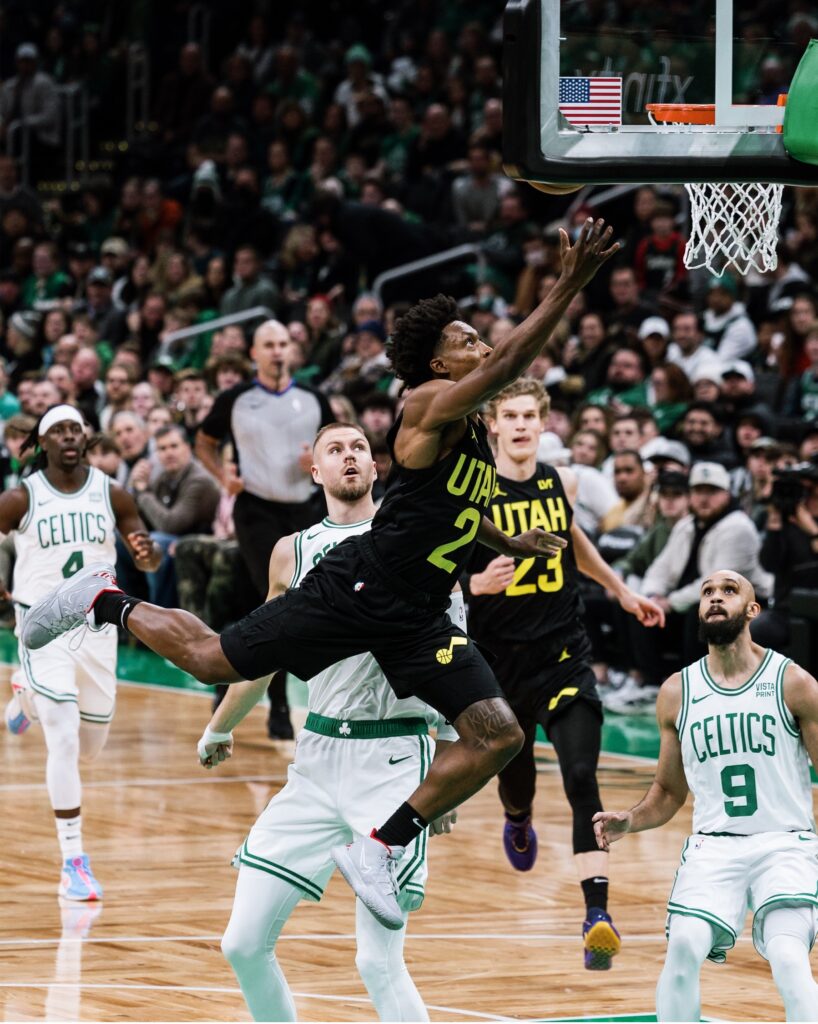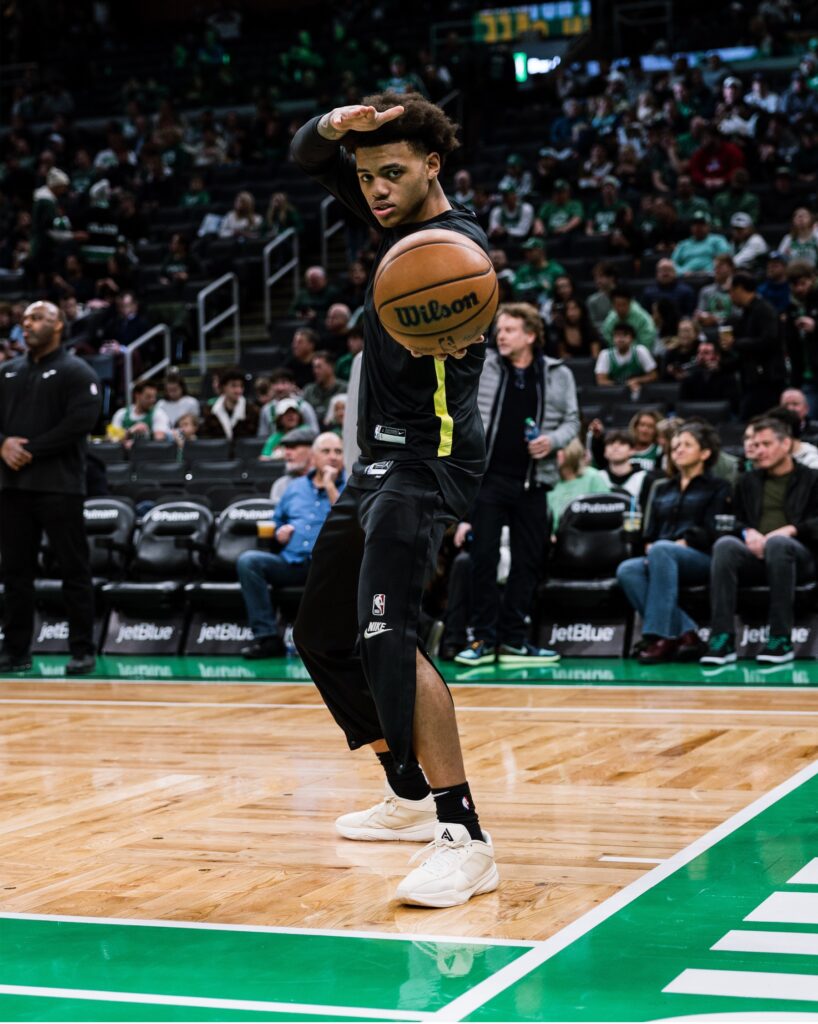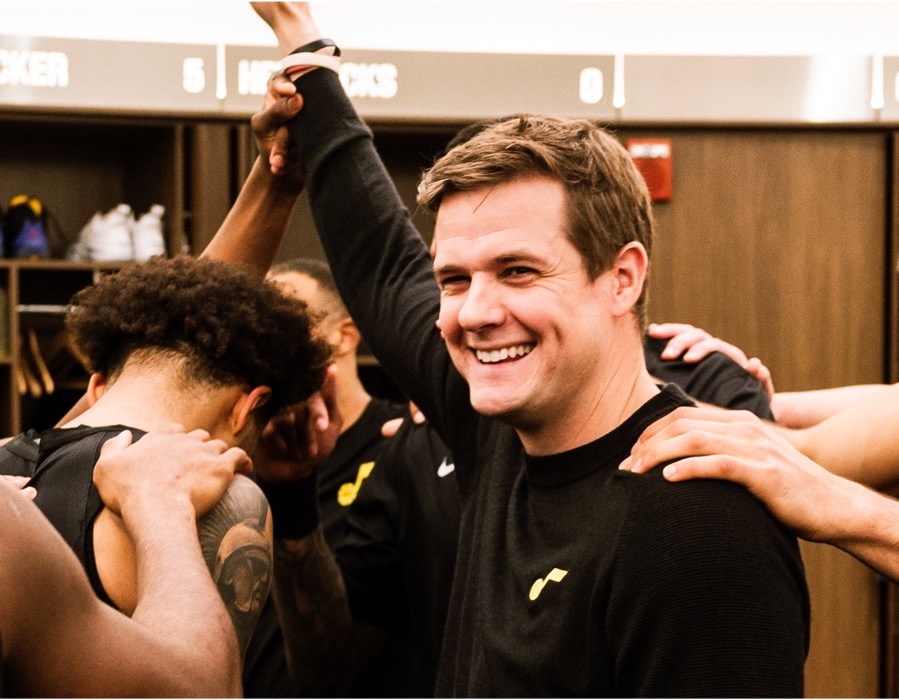A month ago, the Jazz were terrible— “a masterpiece of dog #!*&” is how head coach Will Hardy put it.
Jazz players could be seen bouncing off each other while trying to run their set offense, throwing the ball into the stands or handing it off to the other team like a lay-up drill, standing around the 3-point line waiting for the shot clock to expire, and ole’-ing their opponents to the basket. They were working on the league’s worst offense in early December and sending out the league’s weakest defense. They were, indeed, dog #!*&.
Enter Lower the Rim!
We make a few really swell and very doable recommendations (see “A Few Tips for the Very Bad Jazz“) on how to boost (or make more tolerable) the team’s play and voila! The Jazz improve. Okay, sure… it’s possible (certain) that the Jazz’ coaching staff did not see our suggestions and that they did all this fine work on their own. And yet, we published our tips, and they appeared on the court (sort of), and the Jazz got better—that part is undeniable. Maybe our message reached the minds of the coaches through some sort of telepathy, or osmosis, or mystical transfer via the ether. We’re not sure. We’re looking into it.
But seriously, it is apparent in what we see with our eyes and what we calculate with the numbers that the Jazz are suddenly better. They look like they know what they are doing. What’s going on?.
Is this Hardy’s fault? Yeah, probably
The Jazz are 12 of their last 16… 8 of their last 10.
There’s been key coaching-driven changes that have facilitated this improved play.
First, and foremost, is the decision to change the starting lineup and player rotation. In as starters are Dunn, Sexton, and Fontecchio. Out are Horton-Tucker (and no longer in the rotation), George, Clarkson, and Kessler (wait, Kessler?… more on that later). Clarkson, Olynyk, George, Adbaji, Kessler, shuttle in through the last half of the second quarter… and so it goes. Hardy has been fiddling with different line-ups since opening day… he seems to have finally found an effective blend.

The new mixtures are quicker up the court (a previous LTR recommendation), they’re fast breaking more, they are passing more. The Jazz ranked 23rd in the league in transition frequency prior to December 11. They rank 12th in the league for games played since December 12.
The Jazz now have either Dunn of George on the court at the point and are also running offense through Olynyk when he is in. The new rotation leans into the team’s depth (no stars beyond Markkanen but plenty of NBA-rotation-worthy others) with no player other than Markkanen regularly playing more than 30 minutes a game.
These changes have energized the offense in general. Near the bottom of the league prior to December 11, they now rank 21st in offensive efficiency for the season.
The defense has also been redefined. The previous porous, switching-most-everything approach has been replaced by a mashup of man, rotating quirky zones, and other new but yet to be defined defensive configurations. The Jazz lead the league in use of zones–their opponents now have little idea what they will be playing against once they cross half court. This, and giving more minutes to Dunn, the team’s best on-ball defender, and to the long and tall Fontecchio in this new, spinning wheel of resistance, has the Jazz near the top ten in defense efficiency since December 11.
These changes, although effected by players, are strategic moves, conceived and inserted into the team’s blue-print by Hardy and his staff in the face of, and in an attempt to avoid, continuing to play like dog #!*&. The coaching staff should be commended for their adjustments and also for laying down the “play hard and pass or don’t play” credo. It all seems to have worked.
Going against the grain
Although we’re sure that the Jazz data crunchers have been hard at work on the analytics during this change process, it seems that Hardy has not completely taken a money ball approach.
Case in point is the switch of Jon Collins to the 5-spot and the continued low-minute (relatively, for such an impactful player) play for Walker Kessler from the bench.
Collins has been starting most of the season and his offensive numbers from the center position most recently have been fine. Collins on the defensive end, however, is just plain awful. But Hardy doesn’t like Collins and Kessler on the floor together much… bad spacing he says. That means Walker Kessler, #1 or #2 rim protector in the NBA (depending on the day) and #1 or #2 shot blocker per 36 min. (depending on the day) is on the bench for half the game.
But are Collins’ numbers that bad? Kessler’s had a rough start so why shouldn’t Collins start in his place, right?
Well, the numbers are that bad. The chart below shows the difference in how the team performs with each Jazz rotation player on vs. off the court. It makes perfect sense that Markkanen is at the top of the list for the season (on the left at about 10 points better when he’s on the court). It might be surprising to many that THT is in the 4th spot. But look, please, to the right. The Jazz are almost 16 points worse when Jon Collins is on the court than when he is off. Collins ranks in the bottom 3 percentile in on-off differential of all players in the league—ugh! Meanwhile, the Jazz are nearly 8 points better per 100 possessions when Kessler is on the court than when he is off. Thats a 24 point swing between Collins and Kessler. The Jazz’ analytics nerds must be pulling their hair out.

Now, this chart represents the season to date. The Jazz are winning so Collins must be better, right? No… not so much. In the 13 of the last 16 games in which both Collins and Kessler played, Collins has a totaled plus/minus of -40 points while Kessler is at +141.
And yet, Collins at center and Kessler playing 24 minutes a game has scoreboard. Remember, the Jazz are 12 and 4. And Collins has been on the plus side of the plus minus the last three games.
Hardy is clearly sticking with Collins at the 5.
We can’t argue with the wins and losses. But we sure would like Collins to win a jump ball occasionally to start the game. We need the free double cheese burger from McDonalds. Come on Will, you’re killing us.
Maybe put Kessler in for the jump and sub big Jon in right after if you must.
And on and on

We believe Hardy and his staff will continue to learn and adapt. There are several things that need be paid attention to as they iterate.
Keyonte George at back-up point is terribly inefficient. Not surprising for a 20-year old rookie. But his offensive precentages have yet to come around–he is the anti-Markkanen for on/off statistics.
George’s slow, passive pace is the opposite of what the rest of the rotation is doing. He walks the ball into the defense as if he’s studying moves in some sweaty chess match. If he can’t be more aggressive in attacking defenses, Hardy may have to give him a break.
Also, Watch out Will for the trade deadline. You remember what they did to you last year. If the team trades Olynyk (which they might for the right price) or Clarkson or Sexton (same deal), your carefully-created rotation puzzle might go hodgepodge on you again.
We’re pulling for you. Regardless of what the players or management give you… you’ll figure something out.
